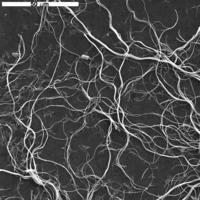David Mogk, Senior Research Professor, Imaging and Chemical Analysis Lab, Montana State University
https://physics.montana.edu/ical/
Work Description * Inspiration and Motivation * Graduate Experience and Professional Development * Other Advice and Media
Describe your current research or work assignment. What topics are you working on? What does a typical work day look like—what would a student expect to do if they followed your career path?
I currently help manage an analytical lab that uses SEM (BSE, EDS, EBSD, CL), powder XRD, AES, ToFSIMS and AFM. We have used these methods to characterize all manner of Earth Materials including biomineralization, minerals for age dating (zircons, apatites), fossil dinosaur eggs and bones, ancient Roman concrete products, and much more. Every day in the lab is another great detective story--using a combination of these methods to characterize the morphology (shape, size), texture, identification, bulk chemical composition, and surface composition of these materials as needed. This work also extends to synthetic and engineered materials that mimic the properties and processes of Earth materials.
What motivated or inspired you to pursue a career in Nanoscience?
I had an early exposure (1975!) in learning how to use the electron microprobe as an undergraduate student at the University of Michigan. This was the first generation instrument that allowed us to measure the composition of minerals on a micron scale. And, I learned that the composition of minerals could reveal the secrets of Earth history, geologic processes, and environments of formation of the host rocks and minerals. I continued this path of material characterization of igneous and metamorphic rocks in my graduate work at the University of Washington, doing my MS thesis on a contact metamorphosed carbonate snark deposit, and then my PhD on the Archean and high-grade metamorphic rocks of the Beartooth Mountains, Montana. Subsequently, throughout 45+ years of my professional career, this knowledge of instrumental characterization of Earth materials has been at the center of my teaching and research, and I"ve applied these methods to collaborative research in economic geology (ore deposits and environmental mitigation), paleontology (fossil dinosaur bones and egg shells), geobiology and biomineralization, geomorphology and chemical weathering, and certainly many styles of igneous and metamorphic processes. My perspective as a Mineralogist/Crystallographer has also contributed to studies in Material Sciences (corrosion processes in cold-rolled steel) and work on semi-conductors and photonic devices. I love the challenge of encountering new Earth materials and then taking them apart to understand something new about how the Earth works. There is no greater joy than seeing something in Nature that has never been seen before! The joy of discovery is my greatest motivation for doing this work.
What graduate experiences/activities were essential for your professional development in Nanoscience? What experiences made a difference in your own career path (e.g., attended a conference, short course, had an opportunity to work in a lab, a key mentor in your life...)?
As an undergraduate student, I was able to do a senior Honors thesis that allowed me to use what was then a brand new technology: the electron microprobe. Research using the EMPA was the port of entry and the foundation for most of my graduate work on the Archean basement of SW Montana, but I also expanded this to include whole-rock (major and trace element) geochemistry, and radiometric age dating. These analytical methods opened the door for me to also participate in a Graduate Fellowship at the Lunar and Planetary Institute, Johnson Space Center, a research cruise to the Kane Fracture Zone (26oN, Mid Altlantic Ridge) with Woods Hole Oceanographic Institute, work on the geochemistry of extremophile microbes from Yellowstone and Antarctica, and mineral exploration (Mo in Alaska; talc deposits of Montana; Au, Cu, Co in Montana; U in Washington, Wyoming and Colorado) and mine site environmental restoration projects. Along the way, attendance at short courses sponsored by the Mineralogical Society of America helped me learn cutting edge science, meet expert researchers, and build career-long networks.
Any other advice to help an aspiring Nanoscience student?
Be curious. Be interested in the whole world around you. Regularly browse the literature (outside of your own field of specialty) to see what is new, interesting and important. Look for ways to make connections of your own research with the other Earth and Environmental Sciences, and also with allied disciplines in Physicis, Chemistry, Material Science and the Life Sciences. Build a strong and diverse foundation of knowledge and skills because career paths are typically non-linear and you never know what opportunities will come your way. Finally, work according to your own highest personal and professional standards--Work with integrity, earn and build trust, have respect for your Science and with those who do Science with you.


![[creative commons]](/images/creativecommons_16.png)

![[reuse info]](/images/information_16.png)
